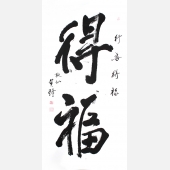- 资质:AGA 艺
- 评分:
1分 2分 3分 4分 5分 6分 7分 8分 9分 10分 2.6分
- 印象:
- 经营时间:20年
- 展厅面积:
- 地 区:北京-朝阳-798
鲍栋评杨茂源:诉求一种绝对的异质性
2016-11-03 16:49:26 作者:鲍栋 来源:站台中国
杨茂源的艺术一直在诉求某种不可被兑换性,不能被解释、不可被归类,无法被安排进既定的艺术话语及意义系统中,换句话说,他诉求的是一种绝对的异质性。这种诉求或许源于他早年在戈壁荒漠中的体验,但戈壁早已从一个具体的地域上升成为了一个日常经验系统之外的存在,变成了一种异质性的象征。
In his art, Yang Maoyuan has always pursued some form of the nonexchangeable, the unexplainable, the unclassifiable, that which cannot be placed into the existing system of artistic discourse and meaning. In other words, he is seeking out absolute he terogeneity. This pursuit may be rooted in his early experiences in the Gobi Desert, but the specific region of the Gobi has long ago been elevated into a presence beyond the system of everyday experience, a symbol of that which is alien.
异质性是一种不可被包括社会系统在内的任何系统体制化的存在,这正是前卫艺术的核心,但在杨茂源这里,他诉求是一种带有本体论性质的异质性(heterogeneity),而不是时间延异或政治现场中的差异性(difference)。他的工作就是追溯或探寻这种异质性的过程,他提示又消除语境,暴露又遮挡背景,直到那种不可被还原的存在显现出来,通过图形、体积、色彩,或者某种材料或物品,总之是一种原初形式。
Heterogeneity is a form of existence that cannot be encompassed in the system of society orbe systematized in any way. This is precisely what lies at the core of avant-garde art, but for Yang Maoyuan, this is a heterogeneity of an ontological nature, rather than temporal discrepancy or political difference.His work is a process of pursuing or probing this heterogeneity. He references then removes context, reveals then conceals background, until that presence which cannot be restored emerges to be seen. What emerges from these shapes, masses, colors, materials or objects is always a primal form.
然而,杨茂源并不是一个现代意义上的形式主义者,形式对他来说不止于审美性、结构性、媒介性或物性,实际上,他并不对世界做形式与内容的二元区分,而始终把存在把握为一种整体。正是在这个意义上,这个展览用“相形”(Eidos)来提示他的工作。陈康把古希腊哲学中的Edios翻译为“相”而不是后来常规译法的“理念”,就是为了强调这种存在的整一性。
Yang Maoyuan, however, is not a formalist in the modern sense. For him, form does not stop at aesthetic, structural, medium or material attributes. In fact,he does not divide the world into form and content, but instead always grasps existence as a whole. It is with this in mind that we use the exhibition title Eidos to refer to his work. Chen Kang has translated this ancient Greek philosophical term into “Xiang” (meaning“form”), rather than the conventional translation of “Linian” (meaning “idea”), in order to emphasize the holistic nature of this form of existence.
与哲学的纯粹概念性不同,杨茂源的这些有着考古学色彩的图形所趋向的是一种文化史存在,借用这些个别的图与形,他似乎是在召唤一种普遍的形式,一种不依赖于知识与经验的,数学般自足的存在——属人的但超越了个人,属于文化却已近乎实体。
Unlike the purely conceptual nature of philosophy, Yang Maoyuan’s images with archaeological tones tend instead towards a cultural history existence. Inemploying these different images and shapes, he appears to be summoning some universal form, an existence that is self-sufficient like mathematics, independent of knowledge or experience—belonging to man, but transcending theindividual, belonging to culture but approaching substantive existence.
在这个展览里,杨茂源把古希腊、古罗马的雕像与陶器揉合成一种无特定所指的型体,从造型价值与使用价值中撤出,把历史、文化所带来的固有意义几乎湮灭在不可名状的物质存在中。内厅的绘画与图片也是把各种文化程式从原有的秩序中剥离,再重组为一种无语境的图形,背景墙面上的泥土印痕则来自日常生活中的纹样,杨茂源提示了这些被人们熟视无睹的纹样所具有的文化原型身份,亦暗示了某种一直嵌在人类文明中的"客观知识"(ObjectiveKnowledge)的实存。
In this exhibition, Yang Maoyuan molds the sculpture and pottery of ancient Greece and Rome into a form lacking any defined referents. He retreats from formal and practical value to virtually extinguish all fixed meaning from history and culture within an indescribable material existence. The paintings and images in the exhibition hall also strip various cultural patterns from their original order and rearrange them into forms without context. The mud traces on the wall in the background come from the patterns of everyday life. Yang Maoyuan draws attention to the identity of these exceedingly familiar and often overlooked patterns as cultural prototypes, and thus alludes to the existence of an “objective knowledge” embedded in human civilization.
下一篇:进入“无形” 杨茂源最新个展

 黄琦
黄琦 测试用艺术
测试用艺术


